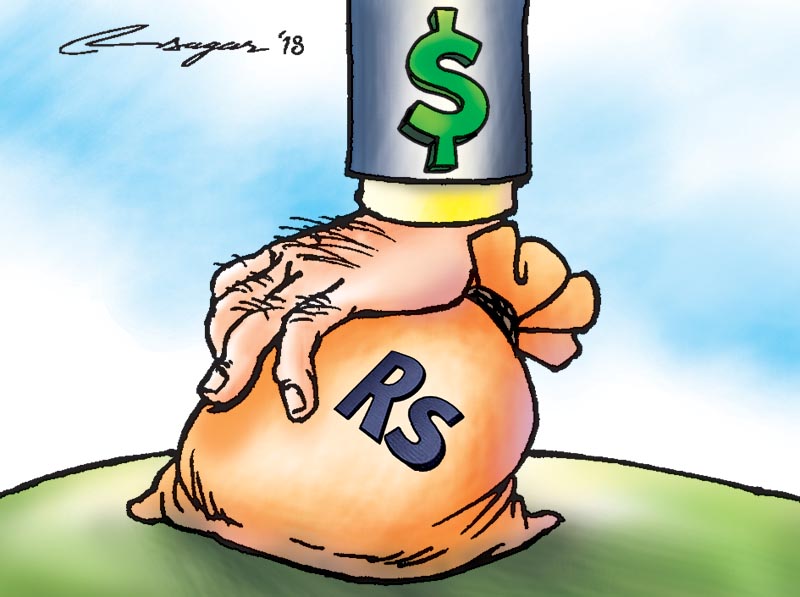Stronger dollar to affect BoP situation
Kathmandu, April 26
Devaluation of the Nepali currency vis-à-vis the US dollar since the last few days could worsen the balance of payments (BoP) situation as imports will be dearer in the coming days.
Appreciation of the dollar has posed various risks in the import-based economy of Nepal that has been currently facing the challenge of widening BoP deficit and the inflation has also quickened gradually in recent months.
The greenback has jumped 2.65 per cent against the Nepali currency since April, and it is expected to appreciate further in the coming days.
The devaluation of the Indian currency has hit the Nepali rupee again and depreciated its value to Rs 107.35 per dollar.
The Nepali currency is pegged with the Indian rupee, which has been depreciating continuously in recent days as the Federal Reserve is on track to raise interest rates two or three times more this year, which is relatively faster than the pace at which other major central banks of other major economies are planning to do. The US central bank's move could widen the rate differentials and further boost the dollar, according to international media reports.
“In the context of widening BoP deficit, a weaker currency makes imports costlier and if the trend continues, we will be a net loser as we are an import-based economy,” according to economists. “As imports will be dearer, this will hit the BoP situation and will also have a negative impact on inflation.”
Likewise, the country will lose out while repaying the principal and interest of foreign loans, which need to be paid in the US dollars.
On the other hand, Nepal Electricity Authority (NEA) will face further losses as it would have to pay more for off-taking power to power producers, with whom it has signed power purchase agreements (PPAs) in dollar terms.
NEA has signed foreign currency denominated PPA with few projects, namely, Khimti, Bhotekoshi, Upper Marsyangdi ‘A' and a few other hydroelectric projects. Stronger dollar will further worsen the financial health of NEA.
On the brighter side, the country could reap advantages from the appreciation of the US dollar. The remittances that migrant workers send home will have more value when the US dollar appreciates. So, the families receiving remittances will receive more of Nepali currency.
Exporters could also exploit this situation if they are able to raise their exports. The government's revenue that is collected at the customs points will also increase as the price of imported goods rises.
And the tourism sector could also capitalise on the situation by bringing in more tourists into the country. Nepal could become an attractive destination for tourists because the stronger dollar will ensure that foreign visitors have higher purchasing power in Nepal with the slide in value of Nepali currency and the services will be cheaper for them here.
POSITIVES AND NEGATIVES
Advantages
- Remittance volume will rise in Nepali rupees and actual inflow could also increase as migrant workers will prefer to send more remittance
- Exports could increase as exporters can reap benefit from foreign exchange earnings
- Higher purchasing power of US dollar helps increase tourist inflow
- Increase in customs revenue
- Country can save US dollars from dividend repatriation of foreign companies
Disadvantages
- Pressure on balance of payments (BoP)
- Inflation could shoot up as imports become dearer
- Country loses more while repaying principal and interest of foreign loans
- PPA in foreign currency denomination will lead to further loss for NEA
- Price of international air tickets will rise (in terms of Nepali rupees), students set to go abroad for study or Nepali travellers (to foreign countries) will have to pay more in Nepali currency for US dollar
- Black-marketing of US dollar could thrive






